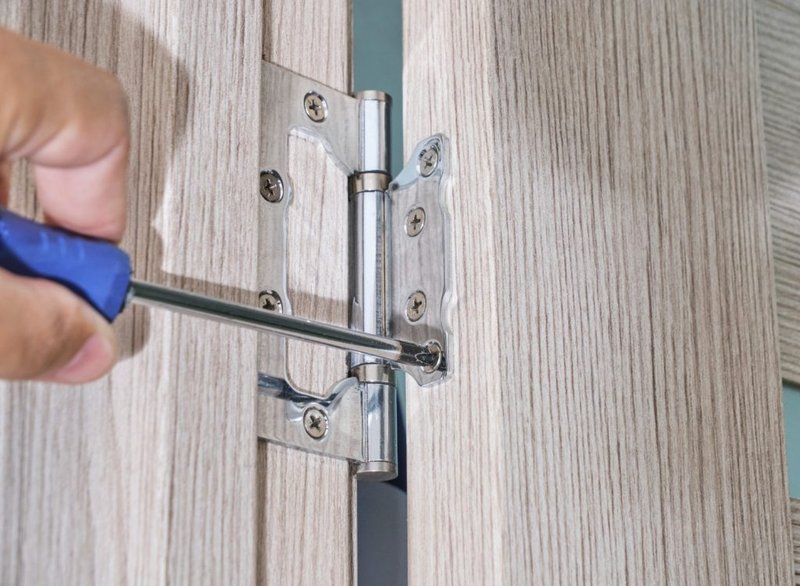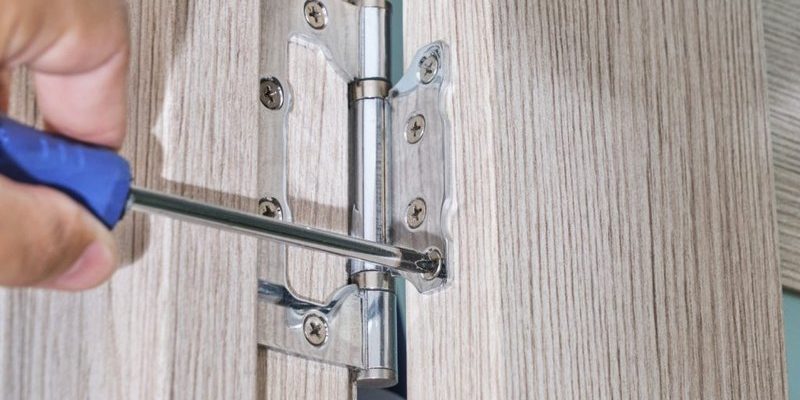
The hinge, like a hardworking friend, bears the weight of the door every time it opens and closes. But just like any friendship, if it isn’t cared for, things can start to sag. Whether you have a wooden door, a metal door, or one with a fancy finish, the hinges need attention. Let’s dive into troubleshooting those troublesome door hinges and getting your door back in shape.
Understanding Why Doors Sag
When you think about it, a door is like a see-saw. If one side is heavier or not balanced right, it tilts. Similarly, door hinges can weaken over time or get misaligned, causing the door to sag. There are several reasons why this happens:
- Wear and Tear: Just like any mechanical part, hinges can wear down over time, losing strength and causing misalignment.
- Incorrect Installation: If a door wasn’t installed properly, it might hang too low or high, affecting how it swings.
- Moisture Damage: Doors exposed to moisture can swell, leading to a shift in weight distribution and causing sagging.
Identifying the cause is key. Once you know why your door is sagging, you can take the right steps to fix it.
Checking the Hinge Screws
Before jumping into major repairs, start with the simplest fix: the hinge screws. Over time, these screws can loosen, causing the door to sag. Here’s how to check them:
1. Inspect the Screws: Look at the screws on the hinge plates. Are any of them loose?
2. Tighten: If you find loose screws, grab a screwdriver. Tightening them might just solve your sagging problem.
3. Replace Stripped Screws: If a screw won’t tighten, it might be stripped. In that case, replace it with a longer screw to grab more wood.
Fixing the screws is a small step that can make a big difference. It’s like tightening your shoelaces before a run—you’ll have a smoother experience afterwards.
Examining the Hinge Alignment
Even if the screws are tight, the hinges might still be misaligned. Think of this like a picture frame that’s slightly off-kilter. Here’s how to check and adjust the alignment:
1. Open the Door: Swing the door open and closed a few times. Does it feel smooth?
2. Look at the Gap: Check the gap between the door and the frame. Is it even? If one side is sticking out more than the other, you may have a hinge alignment issue.
3. Adjust the Hinges: If the door is misaligned, loosen the screws on the top hinge slightly. Lift the door gently to the desired position and tighten the screws again.
It might take a bit of trial and error, but adjusting the alignment can help restore your door’s proper function.
Inspecting the Hinge Condition
Sometimes, it’s the hinge itself that’s the problem. If it’s rusting, damaged, or just plain worn out, it won’t hold your door properly. Here’s what to do:
1. Look for Rust or Damage: Take a close look at each hinge. If you see rust or wear, it’s time to replace it.
2. Test the Hinge Movement: Open and close the door. A squeaky hinge can indicate it needs lubrication or replacing.
3. Lubricate if Needed: A little WD-40 or silicone spray can go a long way to ensure your hinges work smoothly.
Keeping your hinges in good condition is like maintaining a car; it works better when cared for regularly.
Choosing the Right Replacement Hinges
If you discover that your hinges need replacing, you’ll need to choose the right ones. Here’s how to navigate through your options:
1. Material Matters: Hinges come in different materials like stainless steel, brass, or plastic. Stainless steel is great for durability.
2. Size and Weight: Ensure that the hinges can support the weight of your door. A heavier door needs sturdier hinges.
3. Style and Finish: Don’t forget the look! Choose hinges that match your door’s style and the rest of your home decor.
Replacing hinges isn’t as daunting as it sounds. Think of it as giving your door a little upgrade.
Preventive Measures to Stop Future Sagging
Once you’ve fixed your sagging door, it’s important to take steps to prevent the issue from returning. Like a good routine that keeps your car running smoothly, these tips can help:
- Regular Inspections: Check the hinges and screws every few months. It’s easier to fix small issues before they become big problems.
- Keep Moisture Away: If your door is exposed to moisture, consider a sealant or weather stripping to protect it.
- Avoid Excess Weight: Hanging heavy items from your door can cause sagging. Keep it light to avoid stress on the hinges.
Just a little care can go a long way in keeping your door functioning well.
When to Call a Professional
Sometimes, despite our best efforts, a door might need expert assistance. If you find that you’ve tried everything and the door still won’t cooperate, it might be time to call in a professional. Here’s when to consider it:
1. Structural Issues: If the door frame or wall is damaged, a professional can assess and repair it safely.
2. Complex Hinges: Some doors, especially heavier ones, may require specialized hinges and installation.
3. Persistent Problems: If the door continues to sag after making adjustments, there may be underlying issues that need professional evaluation.
Don’t hesitate to reach out for help when needed. It’s better to get it done right than to struggle alone.
In conclusion, troubleshooting a sagging door hinge is often about understanding the problem and taking some practical steps. Whether it’s tightening screws, adjusting hinges, or choosing the right replacements, everyone can handle this issue with a little patience. Keeping your door functioning smoothly is not just about aesthetics; it’s about making your home comfortable and welcoming. So, tackle that sagging door, and enjoy the ease of a smoothly operating entryway!
